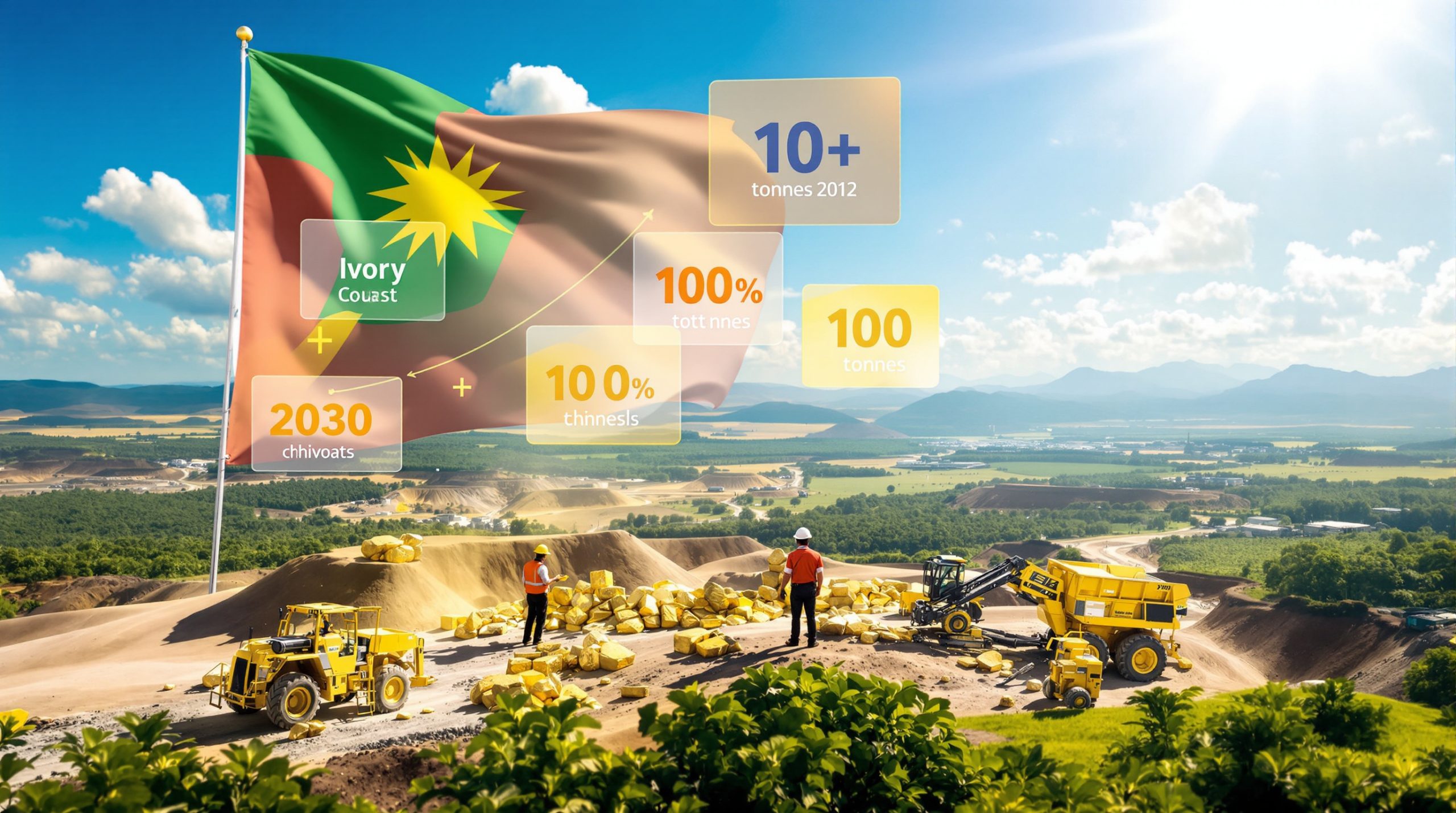Understanding Fortescue's Current Dividend Policy
Fortescue Metals Group (ASX: FMG) implements a dividend policy based primarily on a payout ratio of its annual profits. In FY25, the company adjusted its payout ratio to 65% of net profits, down from 70% in the previous financial year. This slight reduction reflects the company's balancing act between rewarding shareholders and maintaining financial flexibility for its ongoing operations and expansion projects.
The policy aims to deliver consistent returns to shareholders while ensuring the company maintains sufficient capital for its iron ore operations and growing green energy initiatives. This approach allows dividend payments to fluctuate with the company's financial performance, creating a direct link between profitability and shareholder returns.
Fortescue's board regularly reviews this policy to ensure it remains appropriate given market conditions, financial performance, and future investment needs. The current 65% payout ratio provides a buffer that allows the company to navigate commodity price impact while still delivering competitive returns to investors.
Key Elements of Fortescue's Dividend Framework
The dividend framework incorporates several key elements that determine the final payout:
- Base profit calculation: Dividends are calculated on underlying net profit after tax (NPAT)
- Payout ratio: Currently set at 65% of NPAT (reduced from 70% in FY24)
- Payment frequency: Dividends are paid twice yearly (interim and final)
- Currency considerations: While dividends are paid in Australian dollars, the company's earnings are primarily in US dollars
This structured approach provides transparency for investors while allowing management the flexibility to adjust to changing market conditions.
How Has Fortescue's Dividend Performance Changed Over Time?
Recent Dividend Trends
Fortescue's dividend has experienced significant fluctuation in recent years, largely tracking the volatile iron ore market trends. The most recent financial results revealed:
- FY25 final dividend: AU 60 cents per share (33% decrease year-over-year)
- FY25 total dividend: AU $1.10 per share (44% decrease from FY24)
- Current dividend yield: 5.6% fully franked (approximately 8% grossed-up with franking credits)
This decline in dividend payments directly correlates with Fortescue's reduced profitability in FY25, where the company experienced:
- 15% decrease in revenue to US$15.5 billion
- 26% drop in underlying EBITDA to US$7.9 billion
- 40% reduction in underlying earnings per share to AU$1.69
Historical Dividend Context
Fortescue has historically delivered substantial dividends during periods of high iron ore prices. The company's dividend history demonstrates its commitment to returning profits to shareholders when market conditions are favorable, while adjusting distributions during challenging periods to maintain financial stability.
The company's dividend has been on a roller-coaster ride over the past decade, closely mirroring the cyclical nature of iron ore prices. During the iron ore boom period of 2020-2021, Fortescue paid record dividends that briefly positioned it among the highest-yielding stocks on the ASX. This was followed by a moderation as iron ore prices normalized.
Dividend Growth Analysis
Looking at Fortescue's dividend trajectory over a longer timeframe reveals important insights:
| Financial Year | Total Dividend (AUD) | Year-over-Year Change |
|---|---|---|
| FY21 | $3.58 | +103% |
| FY22 | $2.81 | -22% |
| FY23 | $2.30 | -18% |
| FY24 | $1.95 | -15% |
| FY25 | $1.10 | -44% |
This pattern highlights the correlation between Fortescue's dividend payments and iron ore market conditions, with the sharp decline in FY25 reflecting both lower commodity prices and increased capital allocation toward the company's green energy initiatives.
What Factors Influence Fortescue's Dividend Decisions?
Iron Ore Market Dynamics
As Fortescue's primary revenue source remains iron ore production, the global market price for this commodity significantly impacts the company's profitability and, consequently, its dividend payments. Key factors include:
- Chinese steel production and infrastructure investment
- Global supply-demand balance for iron ore
- Shipping and logistics costs
- Currency exchange rates, particularly AUD/USD
The iron ore market has faced numerous challenges in recent years, including Chinese property sector weakness, which has constrained demand for steel and consequently for iron ore. These market dynamics have directly impacted Fortescue's revenue generation and dividend capacity.
Financial Performance Metrics
Beyond market conditions, several company-specific financial metrics influence Fortescue's dividend decisions:
- Net profit after tax (NPAT)
- Free cash flow generation
- Capital expenditure requirements
- Debt levels and financing costs
In FY25, Fortescue's financial position showed some concerning trends that likely influenced its dividend reduction:
- Net debt increased 124% to US$1.1 billion
- Free cash flow declined 50% to US$2.55 billion
- Capital expenditure rose 39% to US$3.9 billion
These metrics point to a company that is investing heavily in future growth while experiencing more constrained operating cash flows, necessitating a more conservative approach to shareholder distributions.
Strategic Investment Priorities
Fortescue's dividend policy must balance shareholder returns with strategic growth initiatives:
- Iron ore production optimization and efficiency improvements
- Fortescue Future Industries (FFI) green energy projects
- Exploration and development of new resource deposits
- Technology investments to reduce operational costs
The company's ambitious green energy transition through FFI represents a significant capital commitment that competes with dividend funding. The board must continually evaluate the appropriate balance between returning profits to shareholders and reinvesting for future growth.
Competitive Positioning
Fortescue also considers its dividend policy in the context of its industry peers. As a major player in the iron ore sector, the company aims to maintain competitive shareholder returns relative to other large miners like BHP and Rio Tinto. This competitive positioning helps Fortescue attract and retain yield-focused investors while establishing its reputation as a reliable dividend payer.
When Will Shareholders Receive Fortescue's Latest Dividend?
Key Dividend Dates
For the FY25 final dividend of AU 60 cents per share, shareholders should note these important dates:
- Ex-dividend date: September 1, 2025
- Last date to purchase shares for dividend eligibility: August 29, 2025
- Dividend reinvestment plan (DRP) election deadline: September 3, 2025 (5 PM AEST)
- Payment date: September 26, 2025
Shareholders who own Fortescue shares before the ex-dividend date will receive the payment, while those purchasing on or after this date will not qualify for this distribution.
Understanding the Dividend Timeline
The dividend timeline follows a standard sequence:
- Announcement date: When Fortescue declares the dividend amount alongside financial results
- Ex-dividend date: The cut-off date for dividend eligibility
- Record date: The date when Fortescue reviews its share registry to determine eligible shareholders
- DRP election deadline: Last day to opt into the dividend reinvestment plan
- Payment date: When the dividend is deposited into shareholder accounts
This timeline applies to both the interim dividend (typically announced with half-year results) and final dividend (announced with full-year results).
How Does Fortescue's Dividend Reinvestment Plan Work?
Fortescue offers shareholders the option to participate in its Dividend Reinvestment Plan (DRP), allowing them to reinvest their cash dividends into additional Fortescue shares instead of receiving cash payments.
DRP Participation Benefits
- Convenient way to increase shareholdings without brokerage fees
- Potential compound growth through reinvestment
- Flexibility to participate fully or partially
- Option to change participation status before each dividend
Shareholders wishing to participate in the DRP for the FY25 final dividend must make their election by September 3, 2025.
DRP Mechanics and Considerations
The DRP operates through a straightforward process:
- Shareholders elect to participate via Fortescue's share registry
- Instead of receiving cash, participants receive new Fortescue shares
- The number of shares allocated depends on the DRP price, typically calculated as an average market price over a specified period
- A small residual cash balance may remain if the dividend amount doesn't equate to whole shares
- New shares are issued without brokerage or transaction costs
Investors should consider their personal circumstances, including tax implications and portfolio concentration, when deciding whether to participate in the DRP. While the plan offers a convenient way to compound investments, it may not suit all shareholders, particularly those who rely on dividend income for living expenses.
How Does Fortescue's Dividend Compare to Other ASX Mining Companies?
Comparative Dividend Analysis
When evaluating Fortescue's dividend against other major ASX-listed mining companies, several factors are worth considering:
| Company | FY25 Dividend Yield | Payout Ratio | Franking |
|---|---|---|---|
| Fortescue (FMG) | 5.6% | 65% | 100% |
| BHP Group (BHP) | 5.2% | 70% | 100% |
| Rio Tinto (RIO) | 5.8% | 60% | 100% |
| Mineral Resources (MIN) | 3.7% | 50% | 100% |
| South32 (S32) | 4.2% | 55% | 100% |
Fortescue's dividend yield remains competitive within the resources sector, offering one of the higher yields among major ASX mining companies, particularly when considering the full franking benefits.
Yield vs. Stability Trade-off
While Fortescue's current yield is attractive, investors should also consider dividend stability and growth potential:
- BHP and Rio Tinto typically offer more stable dividend streams due to their greater diversification across commodities and geographies
- Fortescue has historically provided higher yields but with greater volatility, reflecting its greater exposure to iron ore price fluctuations
- Mineral Resources offers a lower yield but potentially greater growth prospects through its lithium operations
This comparison highlights the important trade-off between current yield and dividend stability that investors must consider when selecting mining stocks for income.
Commodity Exposure Considerations
The dividend policies of mining companies are heavily influenced by their commodity exposure:
- Iron ore specialists like Fortescue experience dividend volatility tied to this single commodity
- Diversified miners like BHP can smooth dividend payments across multiple commodity cycles
- Companies with exposure to battery metals may prioritize growth over current dividends
Understanding these dynamics helps investors set appropriate expectations for dividend sustainability and growth when investing in resource companies.
What Are the Tax Implications of Fortescue's Dividends?
Franking Credits and Tax Benefits
Fortescue's dividends are typically fully franked, providing significant tax advantages for Australian shareholders:
- Franking credits represent tax already paid by Fortescue at the corporate level
- These credits can offset personal income tax obligations
- For shareholders with tax rates below the corporate rate, excess franking credits may be refundable
- At current rates, Fortescue's 5.6% dividend yield grosses up to approximately 8% when including franking benefits
This tax-effective income stream makes Fortescue particularly attractive to Australian investors seeking tax-efficient returns, especially retirees and self-managed superannuation funds.
Practical Tax Calculation Example
To illustrate the practical impact of franking credits, consider this example:
An investor receives a $1,000 fully franked dividend from Fortescue. The dividend comes with approximately $429 in franking credits (based on the current corporate tax rate). This means the investor's gross taxable income is $1,429, but they receive a tax credit of $429. If their marginal tax rate is 32.5%, their tax liability on this income would be $464, but after applying the franking credit, they would only need to pay an additional $35 in tax.
This example demonstrates how franking can significantly enhance the after-tax return for many investors, especially those on lower marginal tax rates.
Foreign Investor Considerations
For international investors, the tax benefits of franking credits are typically not accessible:
- Non-resident shareholders generally cannot claim Australian franking credits
- Dividends paid to non-residents may be subject to withholding tax (typically 15-30% depending on tax treaties)
- This tax differential can make Fortescue more attractive to Australian investors than to international investors
These tax considerations are an important factor when comparing Fortescue's dividend yield internationally versus domestically.
How Sustainable Is Fortescue's Dividend in the Long Term?
Future Dividend Outlook
Several factors will influence the sustainability of Fortescue's dividend over the coming years:
Positive Factors
- Strong balance sheet with relatively low debt levels compared to industry peers
- Operational efficiency improvements reducing production costs
- Potential for iron ore price stabilization or improvement
- Diversification through Fortescue Future Industries (FFI) green energy initiatives
Challenges
- Increasing capital requirements for green energy projects
- Volatility in iron ore markets and Chinese demand
- Rising production costs and inflationary pressures
- Competition from other iron ore producers
Analyst Perspectives
Market analysts generally view Fortescue's dividend as sustainable in the medium term, though with potential for continued volatility based on iron ore price forecast. The company's reduced payout ratio of 65% provides some additional buffer against market downturns while still delivering competitive shareholder returns.
The consensus view suggests that while Fortescue's dividend may experience year-to-year fluctuations, the company's strong balance sheet and operational excellence program should support continued dividend payments even during challenging market conditions.
Long-term Strategic Considerations
Looking beyond immediate market conditions, several strategic factors will shape Fortescue's long-term dividend capacity:
- Resource longevity: Fortescue's iron ore reserves are substantial, supporting mining operations for decades
- Cost position: The company's position on the global cost curve will determine profitability through price cycles
- Green energy transition: The capital-intensive development of FFI may constrain dividends in the medium term but could potentially support more diverse and stable returns in the long run
- Industry consolidation: Potential mergers or acquisitions could impact capital allocation priorities
Investors with a long-term horizon should monitor these strategic developments alongside shorter-term market movements when evaluating Fortescue's dividend sustainability.
What Should Investors Consider Before Investing in Fortescue for Dividends?
Investment Considerations
Investors attracted to Fortescue primarily for its dividend should evaluate several factors:
-
Income vs. Growth Balance: Understand that Fortescue represents a balance between income (dividends) and potential growth through its green energy initiatives.
-
Commodity Price Exposure: Recognize that dividend payments will fluctuate with iron ore prices, creating potential income volatility.
-
Diversification Strategy: Consider how Fortescue's transition toward green energy through FFI might impact future dividend policies.
-
Tax Situation: Evaluate how franking credits align with your personal tax circumstances to determine the true after-tax return.
-
Reinvestment Options: Decide whether participating in the DRP aligns with your investment goals versus receiving cash dividends.
Risk Assessment Framework
When evaluating Fortescue as a dividend investment, consider this risk assessment framework:
- Market risk: How sensitive is your portfolio to iron ore price movements?
- Strategic risk: What if Fortescue's green energy transition encounters delays or cost overruns?
- Geographic risk: How exposed are you to Australia-China trade relations?
- Currency risk: How will AUD/USD movements affect your returns?
- Income stability needs: Does your financial situation require stable, predictable income?
This structured approach helps investors determine whether Fortescue's dividend profile aligns with their risk tolerance and financial objectives.
Portfolio Context Considerations
Fortescue's role within a broader investment portfolio deserves careful consideration:
- As a high-yield but volatile dividend payer, Fortescue might complement more stable income sources
- Its exposure to both traditional mining and future-focused green energy provides an interesting sector-bridging position
- Concentration risk should be managed, particularly for investors already heavily exposed to resources or Australian equities
These portfolio construction considerations help investors determine the appropriate position sizing for Fortescue within their broader mining investment insights strategy.
How Does Fortescue's Green Energy Transition Impact Its Dividend Policy?
Balancing Growth and Shareholder Returns
Fortescue's ambitious plans to transform into a green energy powerhouse through Fortescue Future Industries (FFI) creates both opportunities and challenges for its dividend policy:
-
Capital Allocation Tension: Increasing investment in green hydrogen and renewable energy projects may compete with funds available for dividends.
-
Potential Growth Catalyst: Successful green energy initiatives could eventually provide new revenue streams to support future dividends.
-
Transition Period Implications: During the transition phase, shareholders may need to accept lower payout ratios as the company invests in its future.
-
Long-term Dividend Sustainability: Diversification beyond iron ore could potentially reduce dividend volatility in the long run by decreasing reliance on a single commodity.
The company's decision to reduce its payout ratio from 70% to 65% in FY25 may partially reflect this strategic shift, creating additional financial flexibility to fund its green energy ambitions while maintaining competitive shareholder returns.
FFI Investment Profile
Fortescue's green energy subsidiary, FFI, represents a significant capital commitment with a distinct investment profile:
- Capital-intensive development phase: Current investments in green hydrogen, ammonia, and renewable energy technologies require substantial upfront capital
- Extended payback period: Unlike incremental iron ore investments, green energy projects typically have longer paths to profitability
- Different risk profile: Technology, regulatory, and market risks differ from traditional mining industry evolution operations
- Potential for transformative returns: Success could position Fortescue as a leader in the energy transition
These characteristics create a complex dividend equation for Fortescue as it balances shareholder expectations for current income against investments in future value creation.
Dividend Policy Evolution
Investors should anticipate potential changes to Fortescue's dividend policy as its business model evolves:
- The payout ratio may continue to adjust based on FFI funding requirements
- Special dividends might become less frequent as capital is redirected to green investments
- A two-track dividend policy could eventually emerge, with separate considerations for mining and energy businesses
- Alternative shareholder return mechanisms, such as potential spin-offs or tracking stocks, might be considered as the energy business matures
These potential changes highlight the dynamic nature of Fortescue's dividend story as it navigates its ambitious transformation strategy.
Conclusion: Is Fortescue a Good Dividend Investment?
Fortescue continues to offer an attractive dividend proposition for income-focused investors, particularly those who can benefit from franking credits. With a fully franked yield of 5.6% (approximately 8% grossed-up), the stock provides competitive income in the current market environment.
However, potential investors should recognize that Fortescue's dividend will remain closely tied to iron ore market conditions in the near term, creating potential for payment volatility. The company's strategic pivot toward green energy adds another layer of complexity to its investment case, potentially trading short-term dividend maximization for long-term business sustainability.
For investors with appropriate risk tolerance and a medium to long-term investment horizon, Fortescue represents an interesting dividend opportunity that combines the benefits of current resource sector income with exposure to the growing green energy transition.
Final Investment Considerations
When evaluating Fortescue as a dividend investment, consider these key points:
- The current 5.6% fully franked yield (8% grossed-up) remains attractive relative to market alternatives
- Dividend payments will likely continue to fluctuate with iron ore prices and Chinese demand
- The reduced 65% payout ratio provides some buffer against market volatility
- FFI investments may constrain dividend growth in the medium term but could enhance sustainability longer-term
- Tax benefits from franking credits significantly enhance returns for eligible Australian investors
These factors combine to position Fortescue as a high-yield but moderate-risk dividend investment that may suit investors seeking exposure to both traditional resources and the energy transition.
Ready to Catch the Next Major ASX Mineral Discovery?
Discover why significant mineral finds can yield substantial returns by exploring Discovery Alert's dedicated discoveries page, where the proprietary Discovery IQ model transforms complex mineral data into actionable insights. Begin your 30-day free trial today at https://discoveryalert.com.au/discoveries/ to position yourself ahead of the market.




